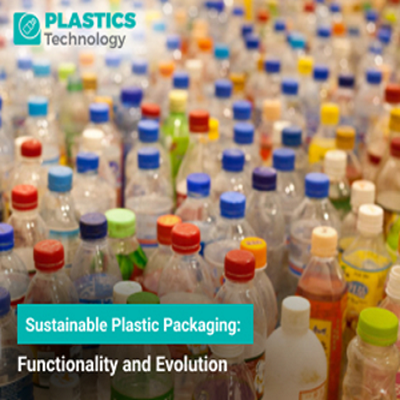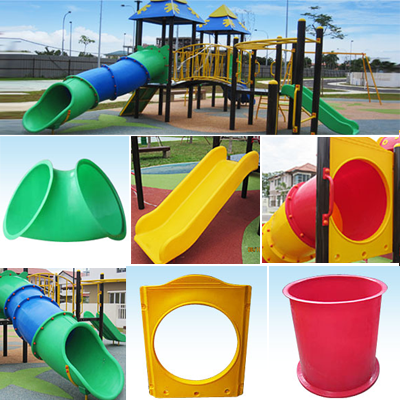Sustainable Plastic Packaging: Functionality and Evolution

In recent years, the global shift towards sustainability has instigated a profound transformation in the world of plastic packaging. While plastic packaging has long been criticized for its environmental impact, the industry has been quick to adapt, leading to the emergence of innovative trends that prioritize sustainability, intelligence, and functionality. Let's delve into the dynamic landscape of plastic packaging and explore the latest trends that are reshaping the industry.
Sustainable Innovations: Reducing Environmental Footprints
The mounting concerns over plastic pollution have compelled the packaging industry to adopt sustainable practices. In response, biodegradable and compostable plastics have gained significant traction. These materials, derived from natural resources, can decompose without leaving behind harmful residues, making them an eco-friendly alternative to traditional plastics. Additionally, companies are increasingly investing in recyclable plastics, ensuring that their products can be repurposed or reused, thereby minimizing waste and environmental impact.
Smart Packaging: Enhancing Product Safety and Customer Experience
The integration of smart technology within plastic packaging has revolutionized the industry, providing an array of benefits. Smart packaging incorporates features such as QR codes, RFID tags, and sensors, allowing manufacturers and consumers to track products throughout the supply chain. This not only enhances transparency and product safety but also enables customers to access vital information regarding the product's origin, authenticity, and usage instructions. Furthermore, smart packaging facilitates real-time monitoring of product conditions, ensuring optimal storage and minimizing product spoilage.
| Also Read: Global Plastics Regulations: Navigating for Sustainability |
Functional Design: Balancing Convenience and Efficiency
While sustainability remains a top priority, the functional aspects of plastic packaging continue to evolve, aiming to enhance user experience and convenience. Manufacturers are incorporating user-friendly designs that prioritize ease of use, storage, and transportation. From resealable packages that prolong product shelf life to lightweight yet sturdy containers that ensure product safety during transit, functional design innovations are reshaping consumer expectations and driving demand for more efficient and practical packaging solutions.
| Also Read: What Are The Latest Innovations In Plastics Packaging? |
Collaborative Initiatives: Fostering a Circular Economy
Acknowledging the complex challenges posed by plastic waste, industry stakeholders are actively collaborating to foster a circular economy approach. This approach emphasizes the reuse, recycling, and repurposing of plastic materials, thereby minimizing the need for virgin plastic production. Collaborative initiatives between packaging manufacturers, government bodies, and environmental organizations are promoting the development of comprehensive recycling infrastructures and the implementation of effective waste management strategies. By encouraging the responsible use and disposal of plastic packaging, these initiatives are paving the way for a more sustainable and environmentally conscious future.
| Also Read: Plastic Additives and Masterbatches: Enhancing Material Performance |
Consumer Awareness and Behavioral Shifts: Driving Demand for Sustainable Choices
In an era of heightened environmental awareness, consumers are seeking sustainable packaging options more than ever. This trend has led businesses to prioritize eco-friendly materials and practices. Companies are proactively interacting with consumers through educational campaigns, emphasizing the advantages of sustainable packaging and promoting responsible consumption. By fostering an environmentally conscious culture, consumers are actively driving the demand for sustainable plastic packaging, propelling industry-wide innovations and initiatives.
Looking Ahead: A Sustainable and Purposeful Future
The evolution of plastic packaging reflects a fundamental shift towards sustainability, intelligence, and functionality. As the industry continues to embrace innovative technologies and collaborate on sustainable initiatives, the future of plastic packaging appears promising. By prioritizing environmental stewardship, product safety, and consumer convenience, stakeholders are reshaping the narrative surrounding plastic packaging, striving towards a future where sustainable practices and functional designs coexist harmoniously, ensuring a more eco-friendly and purposeful consumer experience.
| Also Read: Plastic Healthcare Solutions: Medical Devices and Packaging |
The Role of Regulatory Frameworks: Encouraging Responsible Practices
Regulatory bodies worldwide are placing greater emphasis on implementing strict measures to oversee plastic packaging and promote responsible practices. Policies targeting the reduction of single-use plastics, the promotion of recyclable materials, and the adoption of extended producer responsibility (EPR) frameworks are pivotal in propelling sustainability initiatives across the industry. By establishing clear guidelines and standards, regulatory frameworks foster an environment conducive to businesses investing in sustainable practices and creating innovative solutions that align with global environmental objectives.
Innovative Material Development: Exploring Alternative Solutions
The quest for sustainable plastic packaging has sparked a surge in research and development focused on exploring alternative materials. Bioplastics derived from renewable resources, such as plant-based polymers and bio-based plastics, are gaining prominence for their reduced environmental footprint and biodegradability. Furthermore, advancements in material science have led to the emergence of bio-composite plastics, which combine natural fibers with traditional plastics, enhancing both the strength and sustainability of packaging materials. These innovative materials offer a promising avenue for the industry to reduce its reliance on conventional plastics and embrace more sustainable alternatives.
Supply Chain Transparency: Ensuring Ethical and Sustainable Sourcing
In the wake of the growing prominence of sustainability in the plastic packaging sector, maintaining ethical and sustainable sourcing practices has underscored the critical importance of ensuring supply chain transparency. Stakeholders are placing an increased focus on enhancing visibility within the supply chain, meticulously tracking the origins of raw materials, and advocating for fair and responsible sourcing methods. By prioritizing transparency throughout the supply chain, businesses can uphold stringent ethical standards, mitigate environmental risks, and foster consumer trust, thereby reinforcing their commitment to sustainable and responsible packaging practices.
Educational Campaigns and Community Engagement: Cultivating Environmental Consciousness
Beyond product innovation and regulatory compliance, educational campaigns and community engagement initiatives play a pivotal role in fostering a culture of environmental consciousness and sustainability. Businesses are actively engaging with communities, advocating for responsible waste management practices, and promoting environmental awareness through educational programs and collaborative partnerships. By encouraging active participation and instilling a sense of environmental responsibility, these initiatives empower individuals and communities to make informed decisions and contribute to a more sustainable and eco-friendly future.
Global Collaboration: Addressing Plastic Pollution on a Collective Scale
The challenge of plastic pollution transcends geographical boundaries, necessitating global collaboration and concerted efforts to address the issue at a collective scale. International collaborations and partnerships between governments, businesses, and environmental organizations are instrumental in developing comprehensive strategies and frameworks to tackle plastic pollution. Through knowledge sharing, resource pooling, and collective action, global initiatives aim to curb plastic waste, promote sustainable practices, and foster a more cohesive and coordinated approach towards achieving a circular economy for plastic packaging on a global scale.
In conclusion, the transformation of plastic packaging trends signifies a paradigm shift towards sustainability, transparency, and global collaboration. From the development of innovative materials and supply chain transparency to educational campaigns and global partnerships, stakeholders across the industry are actively working towards creating a more sustainable and responsible future. By embracing these evolving trends and adopting a holistic approach to sustainability, the plastic packaging industry is poised to redefine its role in the global economy, championing environmental stewardship and contributing to a more sustainable and resilient planet for generations to come.



